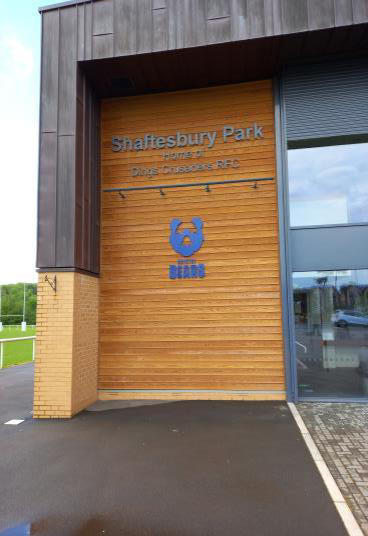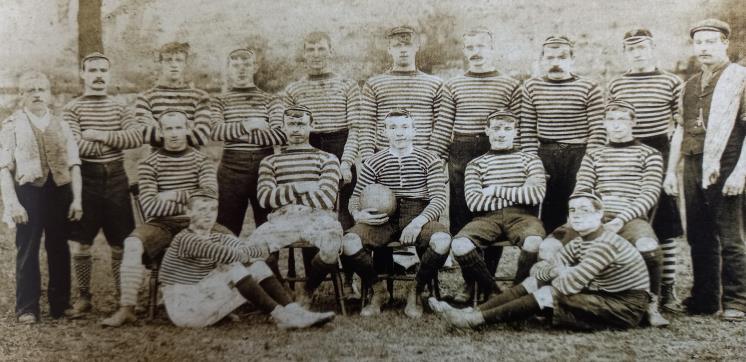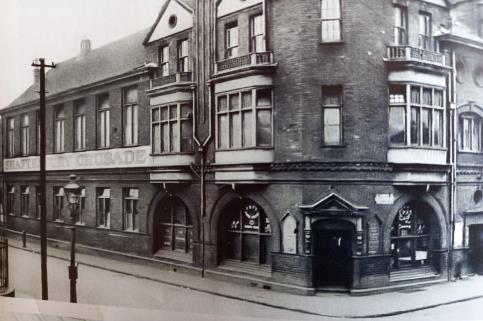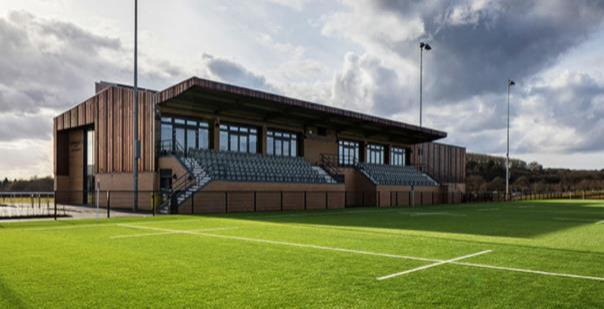Shaftsbury Park and the Dings Crusaders - the story behind the names

While Frenchay adapts to a major transformation with the development of the former Hospital site, it remains a village very conscious and proud of its special history. So too it is with the Dings Crusaders who have brought the excellent facility of Shaftsbury Park to Frenchay, but always respecting the episodes of important social history that have given rise to its present fruition.
Much of the content of this article derives from the commendable book by Ian Haddrell, with his permission and co-operation, entitled ‘The History of Dings Crusaders Rugby Club’, and aided and abetted by long-standing member, a player over several decades dating from the late 1960s, subsequently an enthusiastic supporter and administrator, the Reverend Canon Trevor Denley. Trevor also provides the monthly reports on The Dings for FCN.
So just where and what was ‘’The Dings’ ? It was part of the area of St. Philips, Bristol, close to Temple Meads Station, and through the 19th century was one of the worst slums in the city. In this district of narrow alleys and mean houses, conditions were so bad that the health of the people was severely impaired and ordinary comfort became impossible.. The houses were overcrowded and insanitary, clustered together in courts, sharing one outside toilet between several homes, and with no gardens. The refuge for the man of the household was typically the local pub, where there was light, warmth, and companionship, but the knock-on effects of this temporary comfort were often disastrous for family life.
The persons most motivated to try and alleviate this suffering were from several denominations of the Christian Church. They looked to provide an alternative to the pub and the demons of alcohol. They looked to provide a public facility, without intoxicating drinks, to be open from morning to night, where working men might get a proper breakfast on the way to work, and in the evenings find a place of rest and recreation. The Shaftsbury Hall opened in March 1888. A further aspect developed within a few years, inspired by the then Minister of Redland Park Church, aiming to promote the Christian way of life, while at the same time improving the welfare of the inhabitants of this deprived area. In 1893 the Shaftsbury Mission was established in the Shaftsbury Hall, and members of the Redland Park Young People’s Guild were encouraged to go down to the Dings to run boys’ and girls’ clubs, gymnastic classes, first aid, Bible classes, and many other activities.
The latter part of the19th century was also the era of the introduction of the concept of leisure time, to counter-balance the demands of industrialised work.. In the 1870s, many skilled workers began to have Saturday afternoons off, and in 1871 the Bank Holidays Act had provided a degree of paid holiday. These social changes gave rise to an appetite for sport, which hitherto had been largely the preserve of the aristocracy and landed gentry, with their control of land. Team sports, such as football and rugby thrived, and clubs began to be established. One such club was ‘The Bristol Football Club’, founded in 1888 and which became Bristol Rugby Club, now under the banner of Bristol Bears.
In 1899 the Shaftsbury Hall was extended, funded to a large extent by the Wills family, and the Shaftsbury Mission was formally incorporated and became ‘The Shaftsbury Crusade. Its activities expanded and close links were formed with ’The Dings Club’, essentially a local youth club, and out of this association evolved the Dings Crusaders Rugby Club, founded in 1897.
The ethos behind these developments was expressed by one of its proponents around that time thus:
“Perhaps the best features of this enthusiasm for Rugby Football which has grown up among working men is the delight in hard exercise and consequent self-denial that it has taught him. A man cannot spend his nights and his wages in the Public House if, twice a week, he has to face a hard struggle of forty minutes ‘each way’.“
The idea of ‘a healthy body and a healthy mind’ echoed much of the temperance thinking of the time. It is alternatively sometimes expressed as ‘Muscular Christianity’, where sport builds character and provides alternative activities to those that might be regarded as ‘sinful’ or, at the very least, socially undesirable. Whatever view you take on this, there can be no denying the huge part played by people such as those involved in the Shaftsbury Crusade in contributing to an enormous, and altogether positive, social development.

The evolution of the Dings Crusaders from these early beginnings to the present day, through its several homes and most notably at Lockleaze for many years, is a long story expertly chronicled in Ian Haddrell’s book (available through the Club), and is a story told with pride in the fact that it has become established among the top tiers of amateur clubs in the Country, and with thriving junior sections.


So perhaps when you wander along to Shaftsbury Park for one of their breakfasts regularly served, (but check the details of exactly when) it is worth reflecting on how this links back to the originating days in the Shaftsbury Hall. But feel free to enjoy it, as you should and surely will!